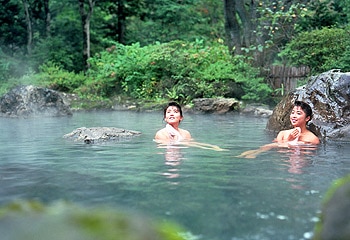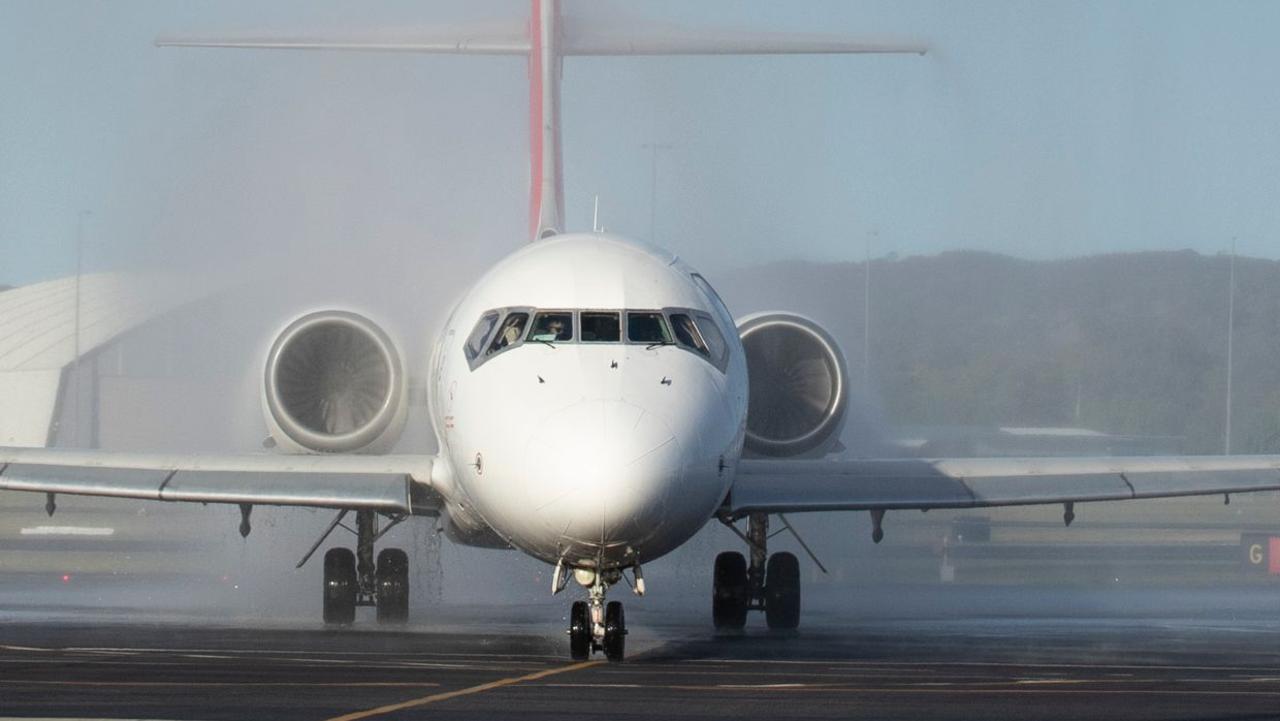Soaking up Japanese tradition
BRIAN Johnston immerses himself in Japan's thermal baths and discovers a rich and age-old tradition that soothes away stress in superb surroundings.

ASK me what you should do when visiting Japan, and I'd say: take a bath.
I took a lot of baths when I was in Japan. I cleaned and scrubbed, sponged and splashed. I've never been so clean in my life, and never so refreshed.
I'm not, of course, talking about any old bath but about onsen, the hot springs that so delight the Japanese.
The Japanese take bathing as seriously as flower-arranging and drinking tea; it's a tradition that goes back more than a thousand years.
There are more than two thousand onsen in the country, and they can vary enormously. Some are ancient pools in the mountains, surrounded by trees and spectacular views.
Some are housed inside old-style inns (ryokan) that retain the feel of yesteryear. Yet others are huge resorts complete with waterfalls, slides, and dozens of baths full of company employees who have been sent off for a week of watery bonding, drinking and karaoke singing.
All this may seem a little confusing, but don't be worried. Most of all, taking to the waters in Japan is fun. There's nothing more relaxing after a long day than plunging into a hot spring.
Sit up to your neck in a hot tub, gazing over a view of distant snowy mountains, and it won't take long to realise why the Japanese are such great advocates of onsen therapy.
The coastal city of Beppu, on the southern island of Kyushu, is the undisputed king of hot-spring life, receiving a staggering 12 million enthusiasts annually.
Not surprisingly, tranquillity isn't one of Beppu's defining characteristics. The city is full of vacationing Japanese who seem more intent on watching strip shows and swilling beer than floating peacefully in hot water.
Still, the vulgarity and tackiness is fascinating, and you have to admire the Japanese ability to blend modernity and materialism with age-old traditions.
Besides, all these people come here for good reason: the city is positively bursting with hot springs. There are at least three thousand of them, and many are spectacular.
At the famous and aptly named Hells (jigoku), the thermal water turns to burping milky-white or orange mud at temperatures that reach boiling point.
The wooden railings separating onlookers from the boiling pit seem disturbingly inadequate, so you may prefer to stand well back from the jostling crowds.
No wonder most visitors retreat to bars for a stiff drink after peering into these hellish cauldrons.
When the waters finally cool off, they're harnessed in 168 different bathhouses dotted around Beppu.
In the evening, you can see locals strolling down the street in their cotton robes and wooden slippers, and returning home with faces flushed from their hot dips.
I headed off to the famous Suginoi Palace, an extravagant hothouse complex of pools and waterfalls hidden among a potted jungle. As at any other onsen in Japan, I had to strip off before entering, leaving all my clothes (and inhibitions) behind in the bamboo basket provided.
Clutching a small hand-towel like a fig leaf, I scuttled into the nearest pool. There I lay on my back, staring at a revolving statue of a Buddhist goddess who serenely looked on from a fish tank filled with orange carp.
There's an entirely different onsen experience to be had on the southern coast of Kyushu.
Ibusuki is a small town renowned for its black sand, which is heated by volcanic vents. On the beach, visitors rent a crisp white yuguta (dressing gown), then lie down on, and are covered over by, shovel-loads of warm sand, until only their faces are showing.
I found it pleasant at first, but as time ticked past the sand became hotter and hotter. (Picnicking locals cook eggs and even potatoes by burying them on the beach.)
After about 10 minutes, the heat became uncomfortable – but afterwards, my entire body felt relaxed and soothed, and my skin more supple than it had felt in years.
For something a touch more traditional in bathing, head to Hokkaido, in Japan's far north.
Noboribetsu has probably the best-known onsen on the island. Competing with the spectacular scenery are some seriously ugly hotels that offer a variety of bathing opportunities.
I chose Daiichi Takimotokan, one of the largest. It boasts 30-odd pools, mineral baths, steam rooms and saunas, where I found statues seemingly sprouting like mushrooms in the humid atmosphere.
In Daiichi's special "sleeping bath", I let myself drift away, a wooden pillow preventing my head from slipping under the water.
My muscles relaxed and my mind unwound as I was lapped by water; onsen seem to bring on meditative moods. Lulled by the bubbles and the steam, I began to realise why many Japanese regard onsen bathing as an almost spiritual experience.
To enjoy every type of onsen Japan has to offer, a visit has to be made to the ultra-modern Spa World, in Osaka.
Not only is this one of the very few onsen in an urban setting, it's also a full-blown theme park, complete with swimming pools and sun terraces.
Here I dipped a nervous toe into onsen water at a tingling 39.6C, before floating serenely around the 11 "countries" of Spa World.
One minute, I was drifting through a muggy tropical world of lush rainforest plants; the next, I was transported to a traditional sauna in remote Finland, surrounded by fake birch trees.
My favourite? The German baths, a faithful recreation of the refined ambience of Baden-Baden, the great German spa centre of the 19th century.
The Europeans were huge spa enthusiasts at the time, but in Europe swimming at the beach eventually took over as the ideal way to relax.
The Japanese can do without sunburn and those troublesome waves. They prefer the peace of their onsen.
Lulled by the water, soothed by the steam and floating away the hours, I began to think they might be right.
The Sunday Telegraph



